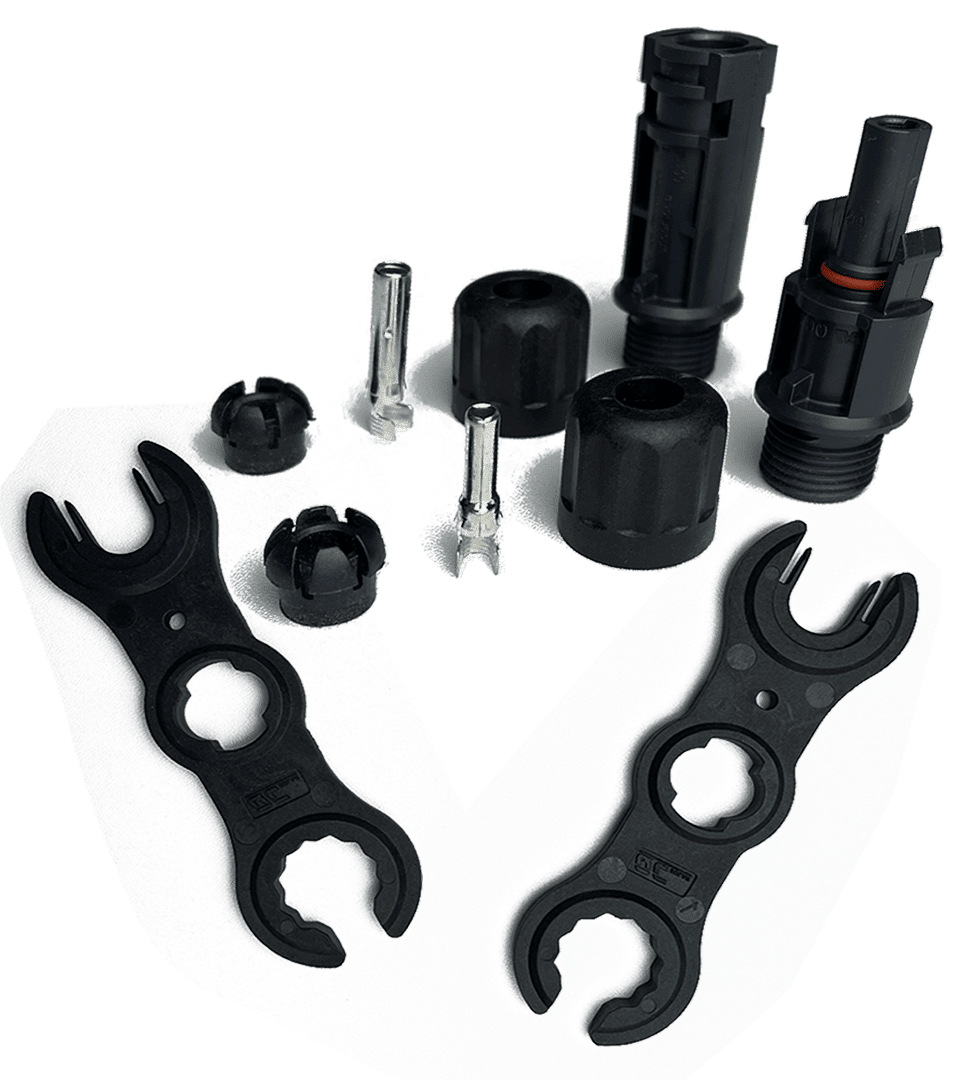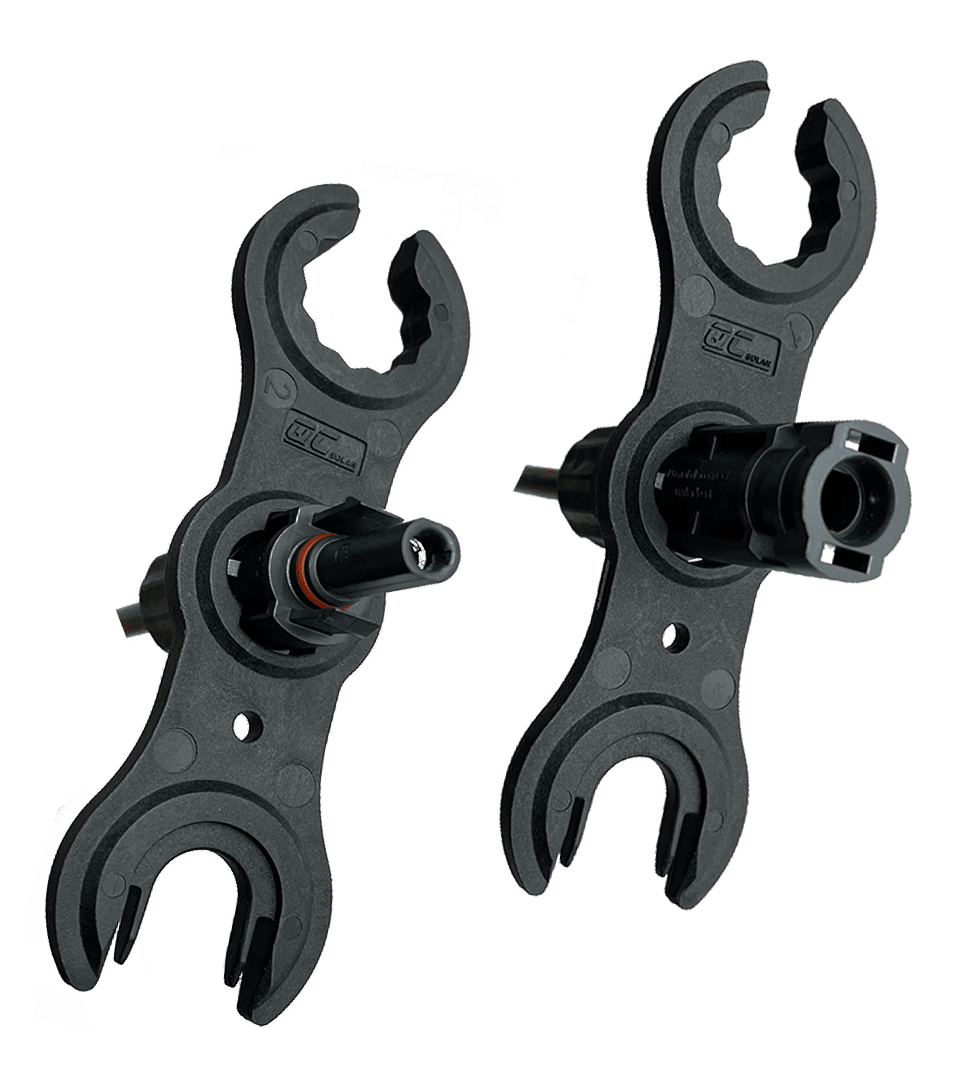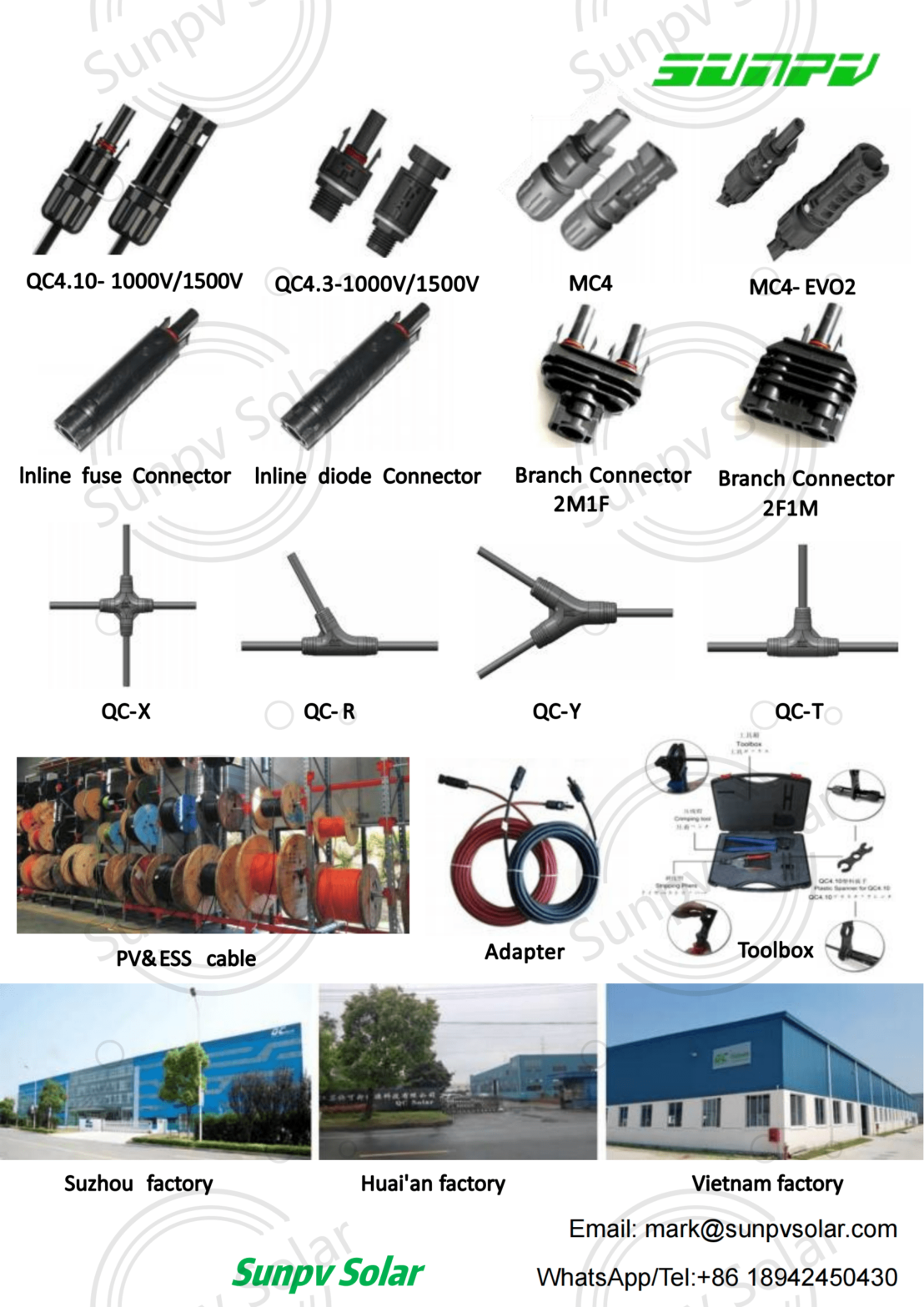In the photovoltaic system, connectors, although a small percentage, but many links need to be used! Many construction personnel do not know enough about the connector, it may cause equipment failure. In the entire PV system DC side voltage is usually as high as 600-1000V, once the PV module connector joints loose, poor contact, it is very easy to cause DC arcing phenomenon. DC arc pulling will lead to a sharp increase in the temperature of the contact part, the continuous arc will produce a high temperature of 1000-3000 ℃, and accompanied by high temperature carbonization of the surrounding devices. The light one melts the insurance, cable, the heavy one burns the equipment to cause a fire.
Component connector, connector plug connected with the busbar and string inverter is a frequent place of failure. Although the connector is small, but in the photovoltaic power generation system is very important, especially in the process of operation and maintenance after the completion of the power plant, to focus on its operational status. To regularly check the connection plug warming phenomenon, to ensure that no abnormal and normal work.









